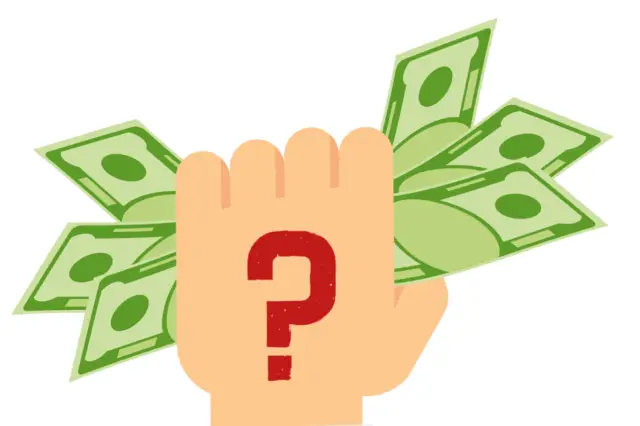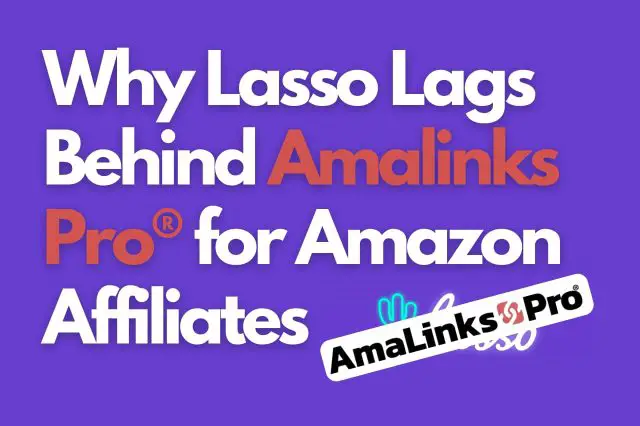As with many aspects of affiliate marketing, the Amazon affiliate commission rate changes often, not just in terms of the actual percentage rates, but also in the nuts and bolts of how it works. In this article, I explain in detail everything you need to know.
Unless otherwise stated this post refers to the U.S Amazon Associates program, but, as you’ll see, there are some fundamental changes going on in Europe right now that could affect the way the commission structure works globally.
What Is The Amazon Affiliate Program?
If you’re new to the world of affiliate marketing you may be wondering what the Amazon affiliate program is. Properly known as the Amazon Associates Program, it’s a commission-based program designed to reward bloggers, content publishers, and other online business owners for referring customers from their website to Amazon to make their purchases.
Let’s say you’re a passionate fisherman and you set up a blog giving readers all of your tips and tricks to land the best catch. As part of your site, you’ll no doubt be recommending the products you use. If you sign up to the Amazon Associates program when you link your readers to a product on the Amazon store, their visit will be tracked via your special affiliate link, and you, as the referrer, will earn a commission.
The affiliate link is unique to you and the Amazon affiliate percentage you earn will depend on the commission rate for the product category. For Outdoors and Sports, it’s 3%. So if the product costs $100, you stand to earn $3 per referral.
That’s the basics of it. However, there is a little bit more to it, and understanding this fully can ensure you maximize your revenue.
What Are The Amazon Associates Program Commission Rates?
There are Amazon associates programs in many different countries and each of those territories has a different set of commission rates as detailed in each operating agreement.
Currently, in the U.S. the commission structure looks like this:
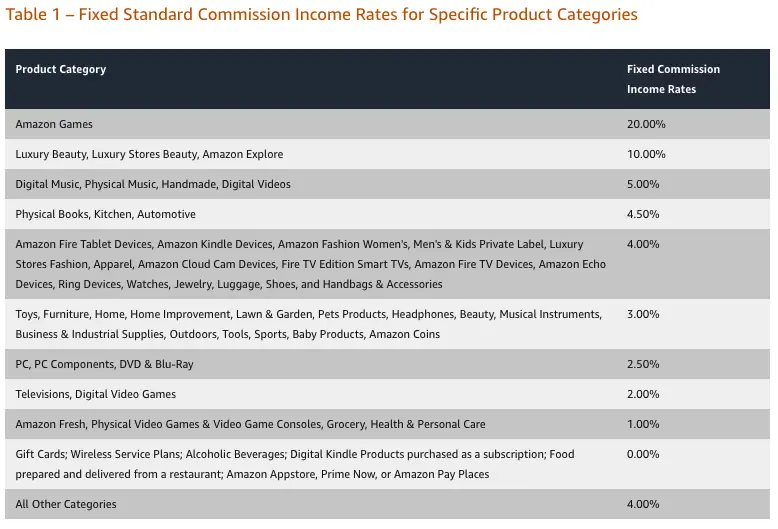
A quick look at this chart shows where the most lucrative verticals currently lie in the U.S. Amazon Associates program. Luxury items and Amazon Coins are by far the highest rates currently on offer, whereas Grocery and Health & Personal Care are at the lower end of the scale.
Given the current situation in the world, it’s perhaps no surprise that Amazon is rewarding affiliates for referring customers to non-essential, higher-end luxury products. During the economic uncertainties of the coronavirus pandemic, the majority of people have cut out things such as luxury purchases and focussed on the essentials, such as home improvement products and grocery products.
This economic model can also help us to understand why the commission rates vary from country to country, too.
Why Do The Amazon Affiliate Commission Rates Vary In Different Countries?
This comes down to the kind of products Amazon is eager to attract people to buy from their store in any given country. Let’s take the German Amazon affiliate program as an example.
Amazon is the biggest e-commerce marketplace in Germany, with a 27% slice of the market in 2019. However, German-born brand Otto is also a hugely popular choice for online shoppers in Germany, leading to it taking more than a 22% share of the German e-commerce market in 2020. Otto is particularly strong in the Home and Fashion product categories, with the German people trusting its brand. Amazon knows this.
So, in an effort to attract more of those online customers over to Amazon Germany to make their purchases, it will come as no surprise that the standard allowance commission rates for those two categories are pretty attractive:
- Fashion – 10%
- Home – 7%
Compare this to the Amazon commission rates in the U.S. and you’ll notice a marked difference, where clothing and home improvement products are much lower:
- Fashion – 4%
- Home – 3%
Amazon, and other businesses, know that affiliates are key to helping them to grow their market share in the countries they operate in. An affiliate marketing program provides a much cheaper customer acquisition cost than say, advertising, for example. And this is why affiliate networks exist.
Compared to many other affiliate programs, Amazon has low pretty commission rates. This is because, for many customers, Amazon is their first choice to shop, leading to dominant market shares for Amazon in many parts of the world.
The benefit to Amazon associates though is that due to the sheer number of Amazon customers – many of them paid Prime members – the conversion rate via Amazon’s affiliate program is often very much higher.
As well as being different across territories, the Amazon commission rates also change frequently within those regions…
Why Do The Amazon Affiliate Commission Rates Change?
The shifting landscape of Amazon commission rates can make you feel like you’re building your business on foundations of sand. But understanding why the rates change can help you to navigate these often choppy waters.
Linking into the above point, the rates will change depending on how much Amazon wants to attract new customers to specific product categories. Going back to our Germany example above, once Amazon hits its targets for the Fashion and Home sectors within Germany, it will almost certainly reduce the commission rate. This is standard business practice and something it’s helpful to accept as part of the affiliate business model. It’s just part of ‘the game’. As an affiliate marketer it’s important to both expect and be prepared for Amazon affiliate commission rate changes across all product categories.
The helpful folk over at Geniuslink have created this truly useful article for publishers that details the Amazon affiliate commission rate changes from 2010 until now. A quick look at this will show you that historically over the past 11 years, rates have generally dropped over time for most product categories, mostly by 43-60%. One category – Amazon Gift Cards – has even fallen the full 100% to offer no affiliate commissions at all right now.
Categories such as Baby Products and Pets Products were only added in 2017 and remained constant at 4.5% and 8% respectively, until the unpopular cut in early 2020. Baby Products then dropped a little to 3%, whereas Pets Products were also slashed to the same rate.
Despite all of that, one of the product categories has actually increased its commission rate. Keen to attract more online customers to buy Handmade Products, Amazon has increased the rate for affiliates from its starting point of 4% in 2010 to 5% now, an increase of 25%.
These changes highlight an important warning for affiliate publishers – don’t chase the profits and let the commission rates be your reason for entering into a certain niche. Build a site around a niche that you’re passionate about and focus on providing the best and most useful content on your topic. Let the Amazon affiliate rates look after themselves. As affiliates, there’s nothing we can do other than ride the rollercoaster of rate changes as part of our journey.
Does Amazon only offer a flat commission rate per Category?
Up until April 2017, Amazon’s affiliate programs utilized a volume-based commission model meaning it was possible to earn higher rates of commissions if you generated lots of sales from your website.
As an example, affiliates could boost a standard rate of 4% for up to 6 products shipped in a given month (in the General Products category) up to 8.5% if your affiliate links generated sales of 3131 products or more. Different categories had different rates and it was a great way for publishers to increase their revenue and profits.
Alas, this was ultimately phased out and replaced with a fixed-fee Standard Commission Income rate for each category across all of Amazon’s programs. However, that has recently changed once again in 5 of the European countries, and rumours hint that the U.S. The program may follow suit…
Direct and Indirect Qualifying Sales
In February 2021, the Amazon affiliate programs in the UK, Germany, France, Italy, and Spain all switched over to the EU Commission Income Statement Appendix. The new appendix utilizes a system of Direct and Indirect Qualifying Sales when describing different types of affiliate links. Amazon’s explanation of these terms is as follows:
Standard Commission Income may vary depending on whether a Qualifying Purchase occurs from a customer making a Direct Qualifying Purchase or an Indirect Qualifying Purchase and based on the amount of Qualifying Revenues for a Product Category. A “Direct Qualifying Purchase” means a Qualifying Purchase of a Product in the same Product Category as the Product detail page linked to from the Special Link that resulted in that Qualifying Purchase. An “Indirect Qualifying Purchase” means a Qualifying Purchase of a Product in a different Product Category than the Product detail page linked to from the Special Link that resulted in that Qualifying Purchase.
There are two points worth noting here. Firstly, the ‘…Qualifying Purchase of a Product in the same Product Category as the Product detail page linked to from the Special Link.‘ Only product detail page links (links that contain /dp in the URL) are counted as Direct links and thus qualify for the Direct Qualifying Purchase commission rate.
Examples
This is a product detail page and would generate 3% on the UK program via an affiliate link:
https://www.amazon.com/Ruko-F11Gim-Brushless-Transmission-Fisheye/dp/B08FJ79PW2
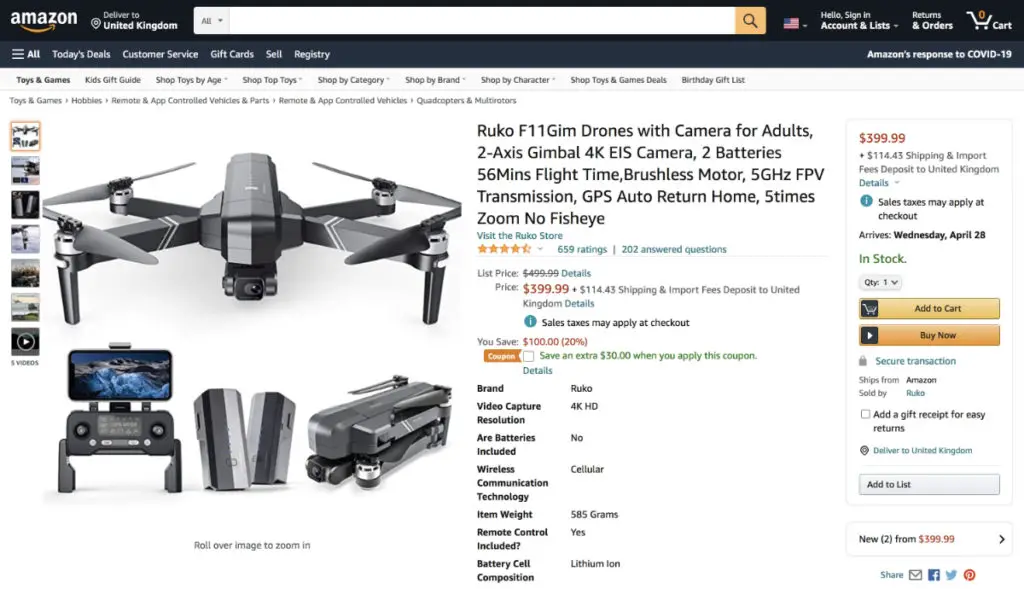
Whereas this is a category page and would generate 1.5% as an Indirect Link:
https://www.amazon.com/s?k=drone+camera&ref=nb_sb_noss
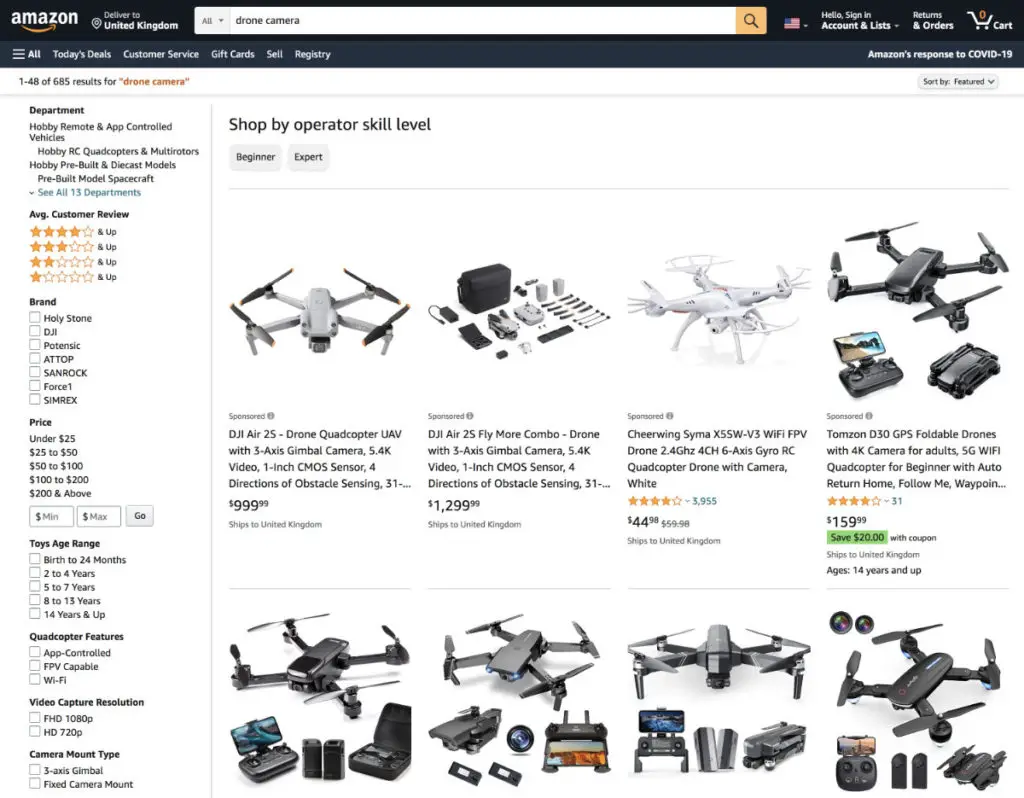
And this is Ruko’s storefront page on amazon.co.uk and would therefore also only generate the Indirect Link rate:
https://www.amazon.com/stores/Ruko/page/A60F3102-B92F-4686-A26E-9050F9D3CB25?ref_=ast_bln

In the latter two examples, even if the products are in the same product category as the product detail page linked to from your affiliate links, they won’t earn the full 3% as the link doesn’t refer to a direct product page.
Secondly, let’s dissect ‘…the amount of Qualifying Revenues for a Product Category.‘ Similar to the now-deceased volume-based commission model mentioned earlier, it’s possible to boost your Amazon affiliate commission rate by 1% if you generate a certain amount of sales per month from Direct Qualifying Links for a product category.
Example
If you were part of the Amazon.co.uk Associates Program and had a website in the Amazon Devices niche, you would earn 3% on Direct Qualifying Purchase links generating sales of up to £5000 in any given month. If your sales went over £5000, your commission rate would increase to 4%.

If you’re a member of one of these five Associates programs, check your content to ensure that the affiliate links on your website are linking to the right place – i.e. a direct product page whenever possible. Even if you’re part of a different Associate program, it’s worth checking this for if/when Amazon rolls it out in other territories.
Are the rates for the referred item and the whole basket the same?
One of the huge benefits of the Amazon affiliate program is that you generate a commission not just on the product that a reader clicks through on, but on any products they buy in the basket within a 24-hour period. For more on this check out our Amazon Affiliate Beginners FAQs, and scroll down to the ‘What is a cookie?’ header.
As an example, let’s say the awesome content in your fishing rod review entices a reader to click through and buy on Amazon. Great! You’ll earn a commission on that sale. But let’s imagine that the reader also decides they need to buy a set of nets and a carry bag for the whole lot – if they buy within 24 hours, you’ll earn commissions on those items, too.
But let’s say alongside fishing gear, your reader also buys a book on trout fishing and a new electric shaver. The commission rates for those products are different falling into the Books and Health and Personal Care product categories, respectively.
So in the example above you’d earn the following commission rates (based on the commission structure on amazon.com):
- Fishing rod (Outdoors) – 3%
- Set of fishing nets (Outdoors) 3%
- Carry bag (Outdoors) 3%
- Trout fishing book (physical copy) (Books) – 4.5%
- Electric shaver (Health and Personal Care) – 1%
Amazon Affiliate Commission Rate FAQs
What Percentage Does Amazon Take?
Zero. The Amazon affiliate program is free to join, and any commissions you earn are all yours. Amazon is rewarding you as a content marketer for your customer referral, giving you a commission on the sale you have helped them to make.
Which Countries Have an Amazon Affiliate Program?
At the time of writing (Feb 2023), Amazon currently operates affiliate programs in 19 countries. Check out our post about Amazon affiliate countries for more information and links to more detailed articles on each program.
Can I Be Part Of More Than One Amazon Affiliate Marketing Program?
Yes. Once you’re signed up to one Amazon associates program, it’s easy to then join any others. Doing this will ensure that if you attract international traffic to your site, you are getting the commissions you deserve when they click your links and are taken to their local Amazon destination. Check out our article on international programs and link localization.
What is the Amazon Bounty Rate?
Separate from the Amazon affiliate commission rate, the Amazon bounty rate is a fixed advertising fee you can earn by promoting various Amazon services, such as Audible or Prime, on your site. All Amazon associates are able to participate. When including adverts on your site be careful not to ruin the user experience by adding too many into your content.
Conclusion
I hope this article has helped to clarify what the Amazon affiliate rates are and how they relate to your online business. It’s worth keeping an eye on the EU Commission Income Statement Appendix to see if it does get rolled out further. If it does, make sure your affiliate links are referring to direct product pages to ensure you get the higher Amazon affiliate commission rates.
If you’re thinking of building an affiliate website or just starting out on your journey with the Amazon Associates program, Matt’s helpful guide tells you what to next – check it out here.

